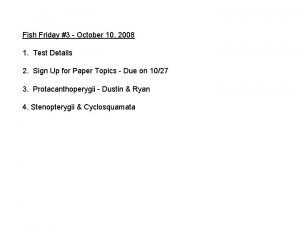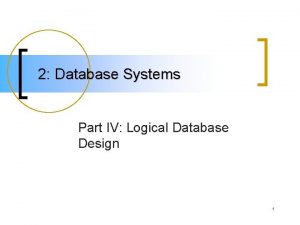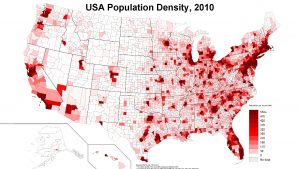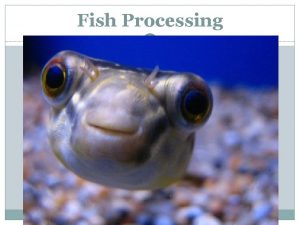Fish Population Assessment How many fish do we































- Slides: 31

Fish Population Assessment How many fish do we have?


Fish Population Assessment w Estimating population size w 1) Plot method w 2) Mark and recapture (Peterson method) w 3) Mark and recapture (Schnabel method) w 4) Change in ratio or dichotomy method w 5) Removal sampling (Zippin method)

Plot Method Total population area Size of the plot Average number of fish per plot Population estimate

Plot Method Estimated Variance Number of fish counted in ith plot Number of plots used

Plot Method 95% confidence interval for s-1 df, p=0. 05

Plot Method Example w Pond area = 100 m 2 w Size of plot = 1 m 2 w Average number of fish per plot = 1. 5

Mark and Recapture Peterson Method (single) Bailey modification Number of fish initially marked & released Number of fish collected/examined in 2 nd period Number of recaptures found in C

Mark and Recapture Variance

Mark and Recapture 95% confidence interval

Mark and Recapture Example M = 550 C = 500 R = 157

Mark and Recapture Example M = 550 C = 500 R = 157

Mark and Recapture Schnabel Method Multiple episodes of mark and recapture CM = total captures X marked fish available for recapture R = recaptures of marked fish

Schnabel Method Variance & 95% C. I. Then invert for 95% C. I. for N

Schnabel Method example p. 137 (2 nd ed. ) Period R Unmarked Total C 150 M CM 1 0 0 0 2 22 203 225 150 33, 750 3 26 86 112 353 39, 536 …. …. 439 …. Total 254 457, 208

Schnabel Method example p. 137 (2 nd ed. ) 95% C. I. = 1, 602 - 2, 049

Change in Ratio or Dichotomy Method Requirements: w 1) two recognizable classes w Species w Sexes w Adults vs. juveniles w Age classes w 2) different rates of exploitation

Change in Ratio or Dichotomy Method Two assumptions must be met: w 1) All population change is due to harvest w No mortality, recruitment, migration w 2) Figures for harvest must be reliable (need for GOOD data)

Change in Ratio or Dichotomy Method Two classes, X & Y Conducted by sport or commercial fisheries or artificial manipulation (selective removal) X/Y 0 Total harvest Zero X harvested per Y

Change in Ratio or Dichotomy Method w 1. Total harvest C (CX , CY) w 2. Sample size before harvest n 1 (X 1 , Y 1) w 3. Sample size after harvest n 2 (X 2 , Y 2)

Change in Ratio or Dichotomy Method Proportion of X in first sample Proportion of X in second sample Population estimate for X

Change in Ratio or Dichotomy Method Population estimate for X + Y Population estimate for Y

Change in Ratio or Dichotomy Method - Example w Trout (T) and suckers (S) w Sample before harvest: w n 1=90, T 1=30, S 1=60 w Sample after harvest: w n 2=58, T 2=14, S 2=44 w Harvest between samples: w 160 trout, 160 suckers

Change in Ratio or Dichotomy Method - Example Proportions of trout in two samples

Change in Ratio or Dichotomy Method - Example Trout estimate Trout and suckers combined Sucker estimate

Removal Sampling Zippin Method w w w w 3 -pass removal U 1=number of fish removed on 1 st pass U 2=number of fish removed on 2 nd pass U 3=number of fish removed on 3 rd pass M=sum of all removals (U 1+U 2+U 3) t=number of removal passes (3) C=weighted sum = (1 X U 1)+(2 X U 2)+(3 X U 3)

Removal Sampling Zippin Method Capture probability

Removal Sampling Zippin Method Population estimate

Removal Sampling Zippin Method - example Slimy sculpin in Garvin Brook t=3 U 1 = 250 U 2 = 125 U 3 = 65 M = 440 C = (1) 250 + (2) 125 + (3) 65 = 695

Removal Sampling Zippin Method - example Slimy sculpin in Garvin Brook

Removal Sampling Zippin Method - example
 One fish two fish red fish blue fish ride
One fish two fish red fish blue fish ride Fish population dynamics and stock assessment
Fish population dynamics and stock assessment One fish two fish blowfish blue fish script
One fish two fish blowfish blue fish script Scale types fish
Scale types fish Chapter 4 population ecology answer key
Chapter 4 population ecology answer key Section 1 population dynamics answer key
Section 1 population dynamics answer key Population ecology section 1 population dynamics
Population ecology section 1 population dynamics Study guide section 1 population dynamics
Study guide section 1 population dynamics Highfin dragonfish
Highfin dragonfish Population health risk assessment and management
Population health risk assessment and management Fish reproductive system
Fish reproductive system Spiracles in fish
Spiracles in fish A big fish swims up and swallows a small fish at rest
A big fish swims up and swallows a small fish at rest 5 market forms of shellfish
5 market forms of shellfish How many syllables in apology
How many syllables in apology Many sellers and many buyers
Many sellers and many buyers Er diagram
Er diagram Convert conceptual model to logical model
Convert conceptual model to logical model What is unary relationship in dbms
What is unary relationship in dbms Unary many to many
Unary many to many Erd ratio
Erd ratio Unary many to many
Unary many to many Many to many communication
Many to many communication Sqlbi many to many
Sqlbi many to many Unary many to many
Unary many to many Many sellers and many buyers
Many sellers and many buyers What is documentation portfolio
What is documentation portfolio Define dynamic assessment
Define dynamic assessment Portfolio assessment matches assessment to teaching
Portfolio assessment matches assessment to teaching Eurozone population
Eurozone population A population of 250 birds inhabit the canopy
A population of 250 birds inhabit the canopy Population distribution
Population distribution






















































